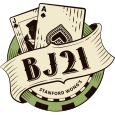In a single level count system the 5s have a tag value of +1. Does adding weight mean that the 5 could be changed to have a new tag value, say, 1.5 or 2? If so, how much power does this bring into play?


In a single level count system the 5s have a tag value of +1. Does adding weight mean that the 5 could be changed to have a new tag value, say, 1.5 or 2? If so, how much power does this bring into play?

Link: http://www.qfit.com/card-counting.htm

Short answer yes. Most counts are characterized as level I, level II and level III. The differences are in a level 1 count all tags have the same value. In a level II count some tags have a value of one and some tags have a value of two. A level III count has tag values of one, two or three.
Let us take a couple of examples. In the high/low count all tags are either -1 or +1. In the Zen level II count some tags are -1 or +1 and other tags are -2 or +2. The Zen count as and example counts fives as +2.
Going from a level one count to a level two count or level III count is usually not advisable. While it is true, if you play accurately, a higher level count will give you more power. Most part-time players do not practice often enough and do not play often enough to perfect their counting skills to the point where they do not make mistakes. Mistakes are costly. It is better to use a count that you have the ability to use without making mistakes. There are many pros that do well using the high/low count. Many full-time players also use the knockout count system.
Learning to count accurately, then learning the I 18 indexes along with a proper spread will get you the dollars without going to a level II count. Level II counts are very difficult in shoe games. They are mostly used in single deck, and double deck.
A pitfall that new players fall into is. They believe they have the ability to go to a higher count level. It is a ego thing and should be avoided.
If the time comes when you are playing hundreds of hours a year and those hours are mostly double deck or single deck. Then a level II count would be beneficial. I personally have used the Zen count, successfully for many years. I seldom play shoes, and most of my play is either double deck or single deck.
Hope this helps you

Thank you for sharing...

As you can see from the link on OldCoot's post it gives you the understanding of various counts and how the 5's are counted. Obviously the removal of a 5 vs any other small card in a single deck game swings the advantage more towards the player. This is why many of the counts give a higher value to the 5. In a balanced count that gives a different value to the 5 vs. other small cards the count automatically adjusts for the removal and thus reflects on the advantage. So in this situation there would be no need to make any further adjustments or add "weight" to the count.
If a balanced count gives the same value to the 5 vs. other small cards then indeed you can give extra "weight" to your count(if you are keeping track of 5's) when calculating advantage. I call this mental "weight" because you have to keep track of the 5's separately and adjust them mentally accordingly to their distribution in the remaining cards. For instance: If you had a count of zero with 13 cards played in a single deck and have seen two 5's you would adjust your count of zero to a plus count for betting because a extra 5 came out. At the same time you would continue to keep you running count. I would also hit a 16 vs 10 at +1 if no 5's came out in the same situation. Revere published a simple strategy for keeping track of just 5's. By keeping track of just 5's in a single deck 3:2 game and adjusting your betting and playing strategy accordingly you can win. It's that easy. Better to keep a separate track of Aces. There is more power in that.

You say, "A pitfall that new players fall into is. They believe they have the ability to go to a higher count level. It is a ego thing and should be avoided." I was a new player not so long ago and I can remember thinking that Hi-Lo was adequate enough to make the money. While I was satisfied with small profit over the last summer, from counseling from local AP's, I realized that using Halves count on shoe games (only game I have access to) had the ability to find those small advantage opportunities that Hi-Lo wouldn�t have found due to overweight of 2's and 9's, and underweight of 7's and especially 5's. My ego was already "satisfied" with the simple counting system but my desire to grow in the game (and try to keep up with the older, more seasoned AP's in my locale) pushed me to relearn counting cards so that when a 2 or 7 comes up I see +0.5 instead of whole numbers. I spent 2 sessions with minimal spreads to focus on thinking in halves and after that I was almost as fast as I was for counting down a deck in Hi-Lo (current time is 21-22 seconds). Some new players want to shoot to the top and start with an advanced counting system, but others grow into the higher level counting systems as they progress through there careers whether they're part-time or full-time AP's.
Bj21 uses cookies, this enables us to provide you with a personalised experience. More info

